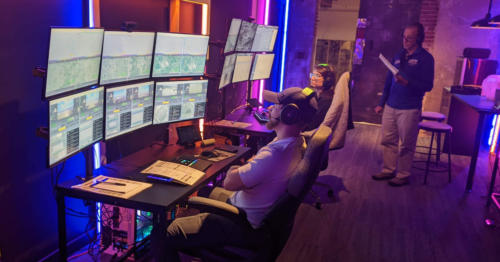Asylon Robotics reports completion of a series of multi-drone flight tests supporting the Federal Aviation Administration (FAA) to help define the next set of standards for safe beyond visual line of sight (BVLOS) operations, says the company press release.
The FAA program is managed by the advanced drone safety engineering and approvals company Anzen Unmanned. As program lead, Anzen developed the safety requirements, test cases, and validation criteria. It also conducting the human factors analysis to evaluate the minimum threshold requirements for safe, complex drone operations like this at scale. The FAA has tasked Anzen with helping define these standards with real-world operational test cases like this as part of their commitment to drone innovation and safety.
During the culminating flight testing event of the contract, a single operator in Asylon’s 24/7 remote operations centre simultaneously controlled six drones – three of their automated DroneSentry drones and three simulated drones. The simultaneous test flights took place in controlled airspace at Griffiss International Airport with the NUAIR Alliance and at Asylon’s headquarters, located in Norristown, PA. Despite being located in geographically disparate locations, the drones were all controlled by a single operator with Asylon’s cloud-based DroneIQ software.
The ability to operate multiple drones simultaneously in controlled airspace follows approval of eight BVLOS waivers for operation at Asylon’s customer sites, says the company. These BVLOS waivers and one-to-many drone operations are keys to unlocking the cost and capability advantages that automated security drones can provide when compared to traditional methods like CCTV camera installation or manned guarding. Asylon’s Co-Founder and Chief Operating Officer, Brent McLaughlin said: “This is good news not only for Asylon and our clients, but for the broader industry as we work with Anzen Unmanned and the FAA to bring the requirements and lessons learned to the open source community and aviation standards bodies.”
For more information visit:




